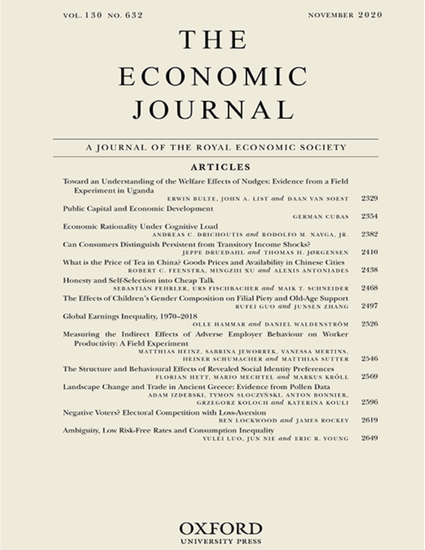
Article
Wealth Inequality in the Long Run: A Schumpeterian Growth Perspective
Economic Journal
(2020)
Abstract
This paper extends the analysis of the wealth–income ratio based on the neoclassical model in a Schumpeterian growth framework in which savings are channelled to both tangible and intangible capital investment. Using historical data for 21 OECD countries over the period 1860–2015, we find that the wealth–income ratio and, hence, wealth inequality, is negatively related to the rate of economic growth and positively related to the rates of investment in intangible and tangible assets, as predicted by the theory. Accounting for the innovation-induced counteracting growth effect on the wealth–income ratio, we show that the net effect of investment in intangibles on wealth inequality is positive. Our estimates suggest that intangibles have been a contributing factor in wealth inequality since 1860 and that the marked increase in the investment in intangible assets in the post–WWII period has been a significant driver of wealth inequality since the 1970s.
Disciplines
Publication Date
Fall 2020
Citation Information
Jakob B. Madsen, Antonio Minniti and Francesco Venturini. "Wealth Inequality in the Long Run: A Schumpeterian Growth Perspective" Economic Journal (2020) Available at: http://works.bepress.com/francesco_venturini/66/
